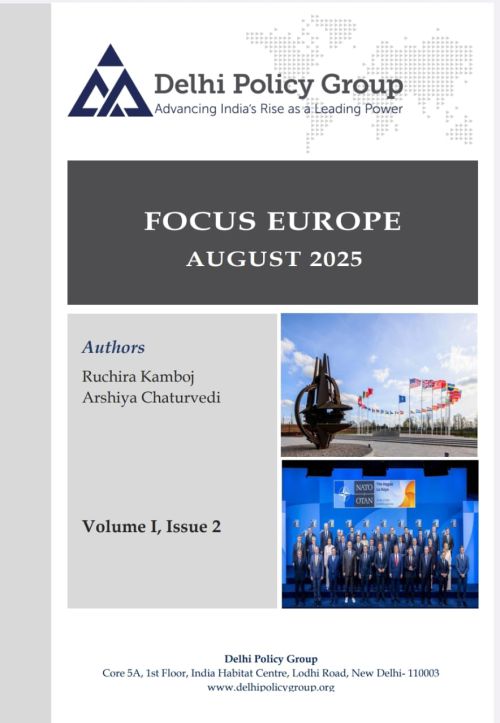Focus Europe
I am pleased to share with you Focus Europe, Vol. I, Issue 2, for the month of August 2025, authored by Ambassador Ruchira Kamboj, Senior Fellow, and Arshiya Chaturvedi, Research Associate.
This monthly features studies of strategic developments and security issues in Europe, the progress of India-EU relations, and India’s ties with major European powers.
In this issue, subtitled “‘Beyond Two Percent : NATO Defence Spending in a Multipolar World’”, the authors examine the drivers of the decision taken by NATO allies to raise their defence spending to 5% of GDP by 2035, and prospects for its implementation.
The “5% Rule” rests on a twin-track approach: 3.5% is earmarked for national forces, Alliance commitments, and collective defence, while the remaining 1.5% is directed toward critical infrastructure, cyber resilience, innovation, and strengthening the defence industrial base.
For many European members of NATO, this represents a doubling or tripling of defence expenditure. The urgency stems from the Ukraine conflict, which has galvanised Europe, with frontline states such as Poland and the Baltics leading the surge, and Germany now following. Yet, questions of feasibility remain. Will the pivot to defence come at the cost of Europe’s cherished social programmes—the classic “guns versus butter” dilemma? France offers an early example of the consequences of welfare cutbacks.
Execution will be fraught. Indebted economies may struggle to comply, risking a two-tiered alliance that undermines NATO’s principle of collective defence. Even if funds are mobilised, Europe must overcome capacity constraints—reviving idle factories and scaling up defence industries—or risk spending without capability gains. Time will tell whether this historic pledge will translate into tangible military strength.
There are, however, encouraging signs. The European Commission has moved forward with the European Defence Industrial Strategy (EDIS)—a blueprint for building EU defence capacity through 2035. Its Readiness 2030 White Paper outlines how the EU plans to fill capability gaps, including via the SAFE €150 billion loan facility for joint defence investments. Commission President Ursula von der Leyen has confirmed that at the October European Council, Europe will present its five‑year roadmap for defence investment and capacity gaps.
Ultimately, the pledge is both a political signal to keep President Trump committed to NATO and an admission that Europe’s security landscape has fundamentally changed. But the true test lies ahead: whether Europe can sustain unity, build real capacity, and, for the first time in several decades, rely on itself for security.
To read this Focus Europe, Vol. I, Issue 2, please see the PDF attached.



